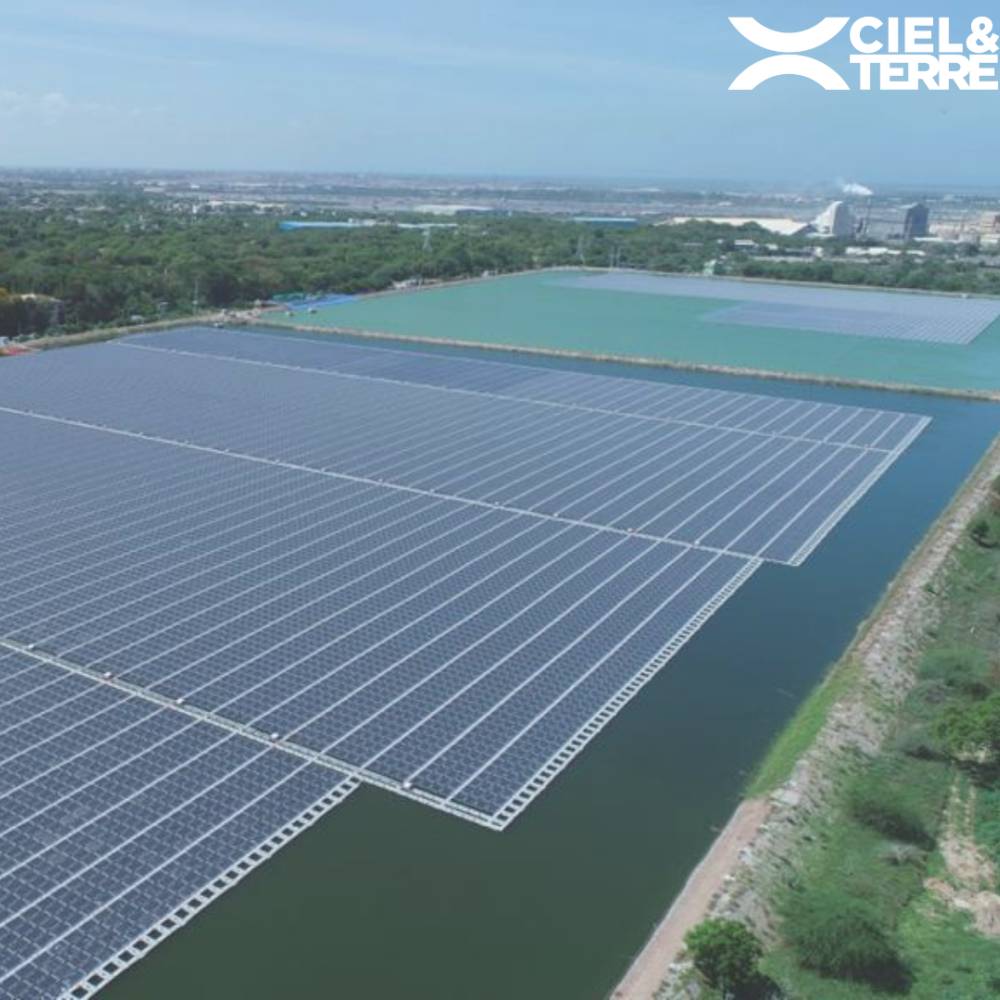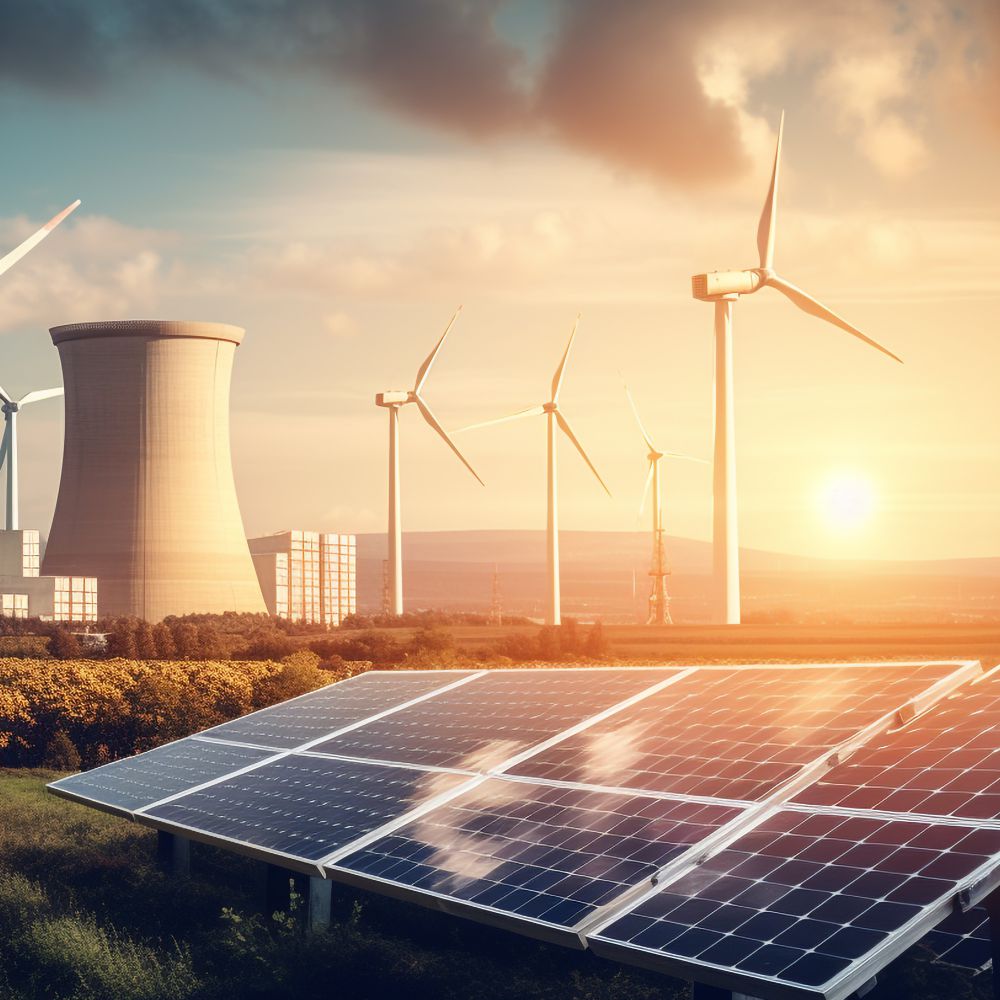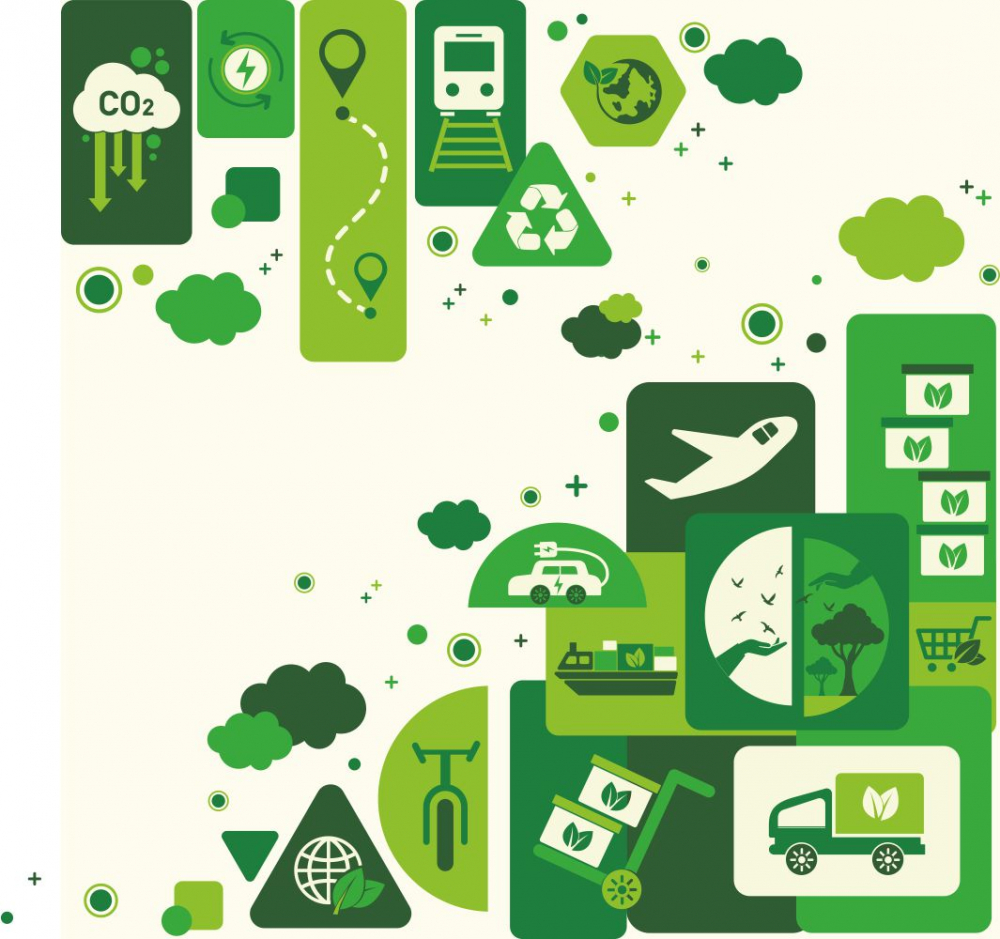“We aim to create a co-existing ecosystem that does not disturb our flora and fauna and at the same time addresses the country’s energy needs. With floating solar, we can achieve our objective effortlessly and efficiently. The Indian Government has an ambitious target of deploying 450 GW of renewable energy by 2030. With this, there are projects that are at various stages of development, and a lot more are being tendered. We are expecting at least 2 GW of floating solar project by 2023,” shares Mr. Srinath S, Head – Procurement & Supply Chain, Ciel & Terre India, during an exclusive interview.
Kindly help us understand the value chain of the industry you are operating in?
Ciel & Terre India was established in 2018 as a subsidiary of Ciel & Terre International, the global leader in Floating Solar with 290+ projects executed in 32 countries, a 1.23+ GW floating project portfolio, and 40+ manufacturing lines in 5 continents. Specialists in the integration of photovoltaic systems, Ciel & Terre®? opened the doors to a new market: floating PV, driven by a need to produce clean energy in a more efficient and land-saving way by introducing the first patented and industrialized water-based PV concept HYDRELIO®? in India. This solution consists of installing PV modules in inland and artificial water bodies to smartly produce energy.
The floating PV group’s activity is fully integrated, including technical innovation, manufacturing, project development, and design. Ciel & Terre India has its manufacturing unit in Kerala, contributing to the Make in India, Made in India mission. Through this, Ciel & Terre creates job opportunities and marks its participation in the economy.
In 2021, Ciel & Terre launched its R&D hub to support global research and innovation. We aim to create a co-existing ecosystem that does not disturb our flora and fauna and at the same time addresses the country's energy needs. With floating solar, we are able to achieve our objective effortlessly and efficiently.
Kindly brief us on the complexities of the supply chain in the industry you operate in? How do you manage them?
Floating solar is still an emerging segment and involves a lot of detailing at each stage of its development. Our designs are project-specific, hence the majority of our products are made to order with specific raw material grades adhering to our standards to ensure the longevity and durability of the products for 25 years. By onboarding the right business partners with the required expertise and following strict quality control protocols and delivery schedules, we are successfully implementing and delivering our projects with applaudable results.
Kindly share with us one of the most challenging projects managed by you.
Every project that we commit to is unique and challenging. Our ongoing project is one of the most challenging projects – A 74 MWp floating solar project in Kerala.
We dived deep into the market to analyze vendors’ expertise in supplying the goods with the required specifications. There were vendors who found our requirements new and challenging. Hence, we involved ourselves in educating and sharing our knowledge with vendors in the Indian market to help them understand our requirements. We have onboarded close to 36 new vendors, which account for up to 22% of our database, for the execution of the project along with our already existing partners.
Brief us on the changing procurement landscape and your strategies at Ciel & Terre?
Floating solar was a relatively new segment when we started back in 2018. We have come across vendors who were hesitant to supply the materials without upfront payment. We are now established in the Indian market and have emerged as one of the best companies to be associated in the Floating solar sector because of our know-how on the product, innovation, knowledge sharing, prompt payments, and supporting our vendors to achieve the deliveries by providing necessary technical knowledge. We treat our vendors as business partners rather than suppliers.
We explore and provide opportunities for our business partners (vendors) on any new product development, this ensures our business partners are engaged with us on the full scope and understand our requirements and deliverables. We engage based on the volume of business for any given project and lock the prices for the duration of the project or until the final supplies are made.
How is the fast-emerging alternate energy expanse slated to change the business dynamics? How are you prepping us to meet the burgeoning demand? What’s your supply chain strategy?
The Indian Government has an ambitious target of deploying 450 GW of renewable energy by 2030. With this, there are projects that are at various stages of development, and a lot more are being tendered. We are expecting at least 2 GW of floating solar projects by 2023.
To meet this demand at its required pace, we forecast our requirements based on our projects at regular intervals to our business partners. This enables our business partners to maintain sufficient inventory of the raw material, which benefits in lesser turnaround time on supply once we place the orders and we have the necessary supplies on time.
How do you maintain a smooth supply chain for floating solar projects in India?
A lot of strategic planning is being done as soon as the project is onboarded and the BOM is released from the engineering Team. We ensure to carefully analyze the procurement lead time by studying and understanding the market dynamics, availability of resources and the bottlenecks to be expected. This thorough research helps us to be prepared for any kind of challenge and we have the alternative solution in hand ready with us while maintaining the quality of the deliverables. Also, we follow our specifically developed RISK MITIGATION strategies, all thanks to our experienced and dedicated team in the supply chain.
The current global dynamics have a greater impact on the global supply chain. How does it impact your business? What has been your action plan for mitigating supply chain risks?
It is true that recent global affairs are impacting the flow of the supply chain in India. Higher freight charges, non-availability of space on vessels, Blank sailings, and long waiting periods at transshipment ports are some of the areas affected. Although this has had less impact on our business, as we had foreseen the situation way ahead even before the first covid lockdown and localized the products with cost optimization, which we were dependent on in the overseas market. This is also a move to support the Indian government’s ‘Make in India, Made in India’ mission.
How have been the last 2 years in terms of circumventing supply chain challenges?
Inflation and the sudden surge in raw material prices were some of the biggest challenges that we have faced. Localization, choosing the correct business partner, and our risk mitigation protocols were handy in overcoming these challenges in the past two years.
Kindly share with us the export-import mix of Ciel & Terre and how have survived the challenging times? What were the innovations made in reaching your customers in the global territory?
As we started sourcing locally, our dependency on imports has come down to NIL. Due to supply chain disruptions, the businesses in China moved out. We at Ciel & Terre India identified the opportunities and promoted exports of these localized products. We have also published our pricelist to our subsidiaries, and it has caught their interest quite well. We are soon aiming to become a major supply hub for our subsidiaries spread across the global territory.
What are the key elements that will help in securing the supply chain for solar projects in the long run?
With climate action being stressed and the world running out of fossil fuels, renewable energy turns out to be a fine answer. Solar energy is an exceptionally reliable and efficient source of energy. However, to maintain its consistency and durability, it is important to concentrate on the quality of the product. I believe optimal cost with no compromise on quality and timely deliveries will play a significant role in securing projects. Interests from public and private investors can be beneficial as it is a win-win situation – renewable energy attracts good returns and helps in the fight against climate change.
You have been a part of the 3PL landscape for quite some time. How do you weigh in both sides of the business – being the user as well as the supplier?
It is two different experiences. In 3PL, we only see the movement of inventory based on the order. Being the actual user, we witness the product right from scratch – the design, development, manufacturing, mass production, quality control, and the end-use. The entire lifecycle of the product is right in front of us, giving us confidence in our product.
What would be your advice to new-age supply chain professionals in tiding through tough times?
Supply chain is a challenging yet exciting profession to be in. There are going to be fresh challenges every day, wherein your skills and strategies will come in handy. These challenges can mold you into a strong expert in the future. For example: To reduce the price, many use conventional methods to achieve this via negotiation with suppliers resulting in either spending a lot of valuable time on follow-ups and discussion during finalization and until the supplies are complete.
Price is important but it should not be the driving factor. We can look at other areas, which can result in cost optimization like design, raw material used, and manufacturing process to reduce the overall cost of the product. Do not push the vendor too much on cost reduction wherein the business will no longer be interesting to the vendor, and this might result in no value-added services from vendors during supplies if we engage after all these.
Be strong and have your strategies planned. Master the art of negotiation, planning, troubleshooting and problem solving, cost accounting skills, and most importantly, understand the requirements and the momentum of the project/product.
What’s your take on the government policy interventions on alternate energy projects and how have they impacted the value chain of your business verticals?
The recent government policy interventions have not had a direct impact on our business verticals as we are not involved in module procurement. Yet, the recent regulation on ALMM has caused delays in module procurement, resulting in delayed project implementation. For EPCs, the change in BCD on solar module imports has resulted in a higher landing cost of the imported products. This has also led to a delayed timeline for many projects.
What are the demand opportunities across the supply chain that you foresee over the next 5 years?
Due to current trade volatility and huge disruption, we need seasoned professionals in the supply chain. I believe the industry is geared up to accommodate this demand with the introduction of innovative technologies, digitalization, working platform, and academic qualification. The supply chain is industry-independent. Today’s younger generation is more enthusiastic and inclined towards choosing supply chain as their profession. The supply chain acts as a bridge between all the departments. Once a male dominant segment, over the last decade, the supply chain has attracted more female professionals as well.
Supply chain leaders are already a backbone in their respective industries and in coming years they will decorate newer positions and empower upcoming professionals because, in the end, a supply chain is teamwork requiring a lot of bonding and understanding between the team.

Categories

Magazine Editions






















